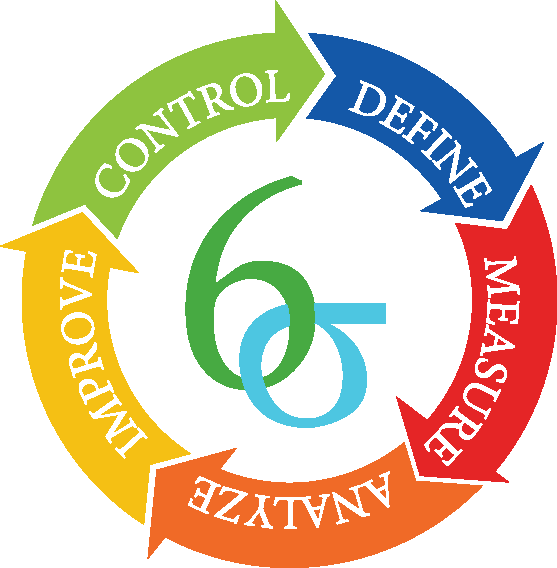
DMAIC Methodology
A data-driven improvement cycle framework used for the optimization and stabilization of different business processes and tools.
Click here to learn about each step!
Define
Define the current process that needs improvement based on voice of customers
Measure
Collect data from the current process to understand the baseline performance of the process
Analyze
Identify potential causes of the problem and validate them to obtain the root causes
Improve
Generate solutions and formulate an implementation roadmap based on the identified solutions
Control
Propose a set of control mechanisms to sustain the improvement changes
Slideshow!
View the information on this page in a slideshow format! Useful for classrooms and all other group settings.
Learning Objectives
- Clear Problem Definition: Establish a precise understanding of the problem and the goals for improvement.
- Data-Driven Insights: Gather and analyze data to identify root causes and areas for improvement, leading to informed decision-making.
- Process Improvement: Develop and implement solutions that enhance efficiency, reduce defects, and optimize overall performance.
- Sustained Control: Create controls and monitoring systems to ensure that improvements are maintained over time and to prevent regression.
- Stakeholder Engagement: Foster collaboration among team members and stakeholders, ensuring that everyone is aligned with the project goals and solutions.
Characteristics
- Data-Centric & Fact-Based
- Focuses on data-driven decision-making to identify and solve problems
- Root Cause Focused
- Prioritizes identifying and addressing the root causes of inefficiencies
- Continuous Improvement
- Fosters a culture of ongoing process refinement and optimization.
- Customer-Focused
- Ensures outcomes align with customer needs and expectations.
- Cost-Effective & Risk Mitigating
- Aims to reduce costs while maintaining control over risks and process stability
Benefits
- Clearly defines and measures objectives to ensure focused efforts
- Provides a framework for data analysis that uncovers potential improvements
- Tracks and improves performance over time, promoting continuous progress
- Prevents resource waste by reducing inefficiencies
Drawbacks
- Requires lengthy training and skill development for all team members
- Needs full commitment from everyone involved
- Involves non-trivial implementation, which can be challenging
- Takes time to generate results, potentially delaying immediate improvements
Example

- Continental Mabor, a tire manufacturing company in Portugal, used DMAIC to improve its rubber extrusion process for tire treads and sidewalls
- Define: The company created a project charter, using tools like Gantt charts, to identify problems, establish objectives, and define the project scope
- Measure: A detailed data collection plan measured rejected material from the extrusion process over 30 weeks, identifying inefficiencies in the production process
- Analyze: Revealed issues with one machine in the sidewall extrusion process and material-feeding methods in the tread extrusion process
- Improve: Continental Mabor addressed these root causes by making machinery adjustments and changing operational methods, leading to significant process improvements
- Control: Post-implementation data showed a reduction of five tons of waste per day, resulting in savings of €165,000 annually
How Can We utilize this approach?
- Supports performance and results management by helping the team define, measure, analyze, improve, and control processes
- Prevents waste in business processes through early identification and mitigation of inefficiencies
- Enhances overall organization, accessibility, and operation of the Toolkit for more efficient workflows
- Requires appropriate training and full team involvement to achieve these outcomes
- Needs an existing project in place to apply the framework effectively
- Promotes SDG #9: Industry, Innovation and Infrastructure by fostering innovation in business processes, improving infrastructure efficiency, and promoting sustainable industrial practices through waste reduction and performance optimization